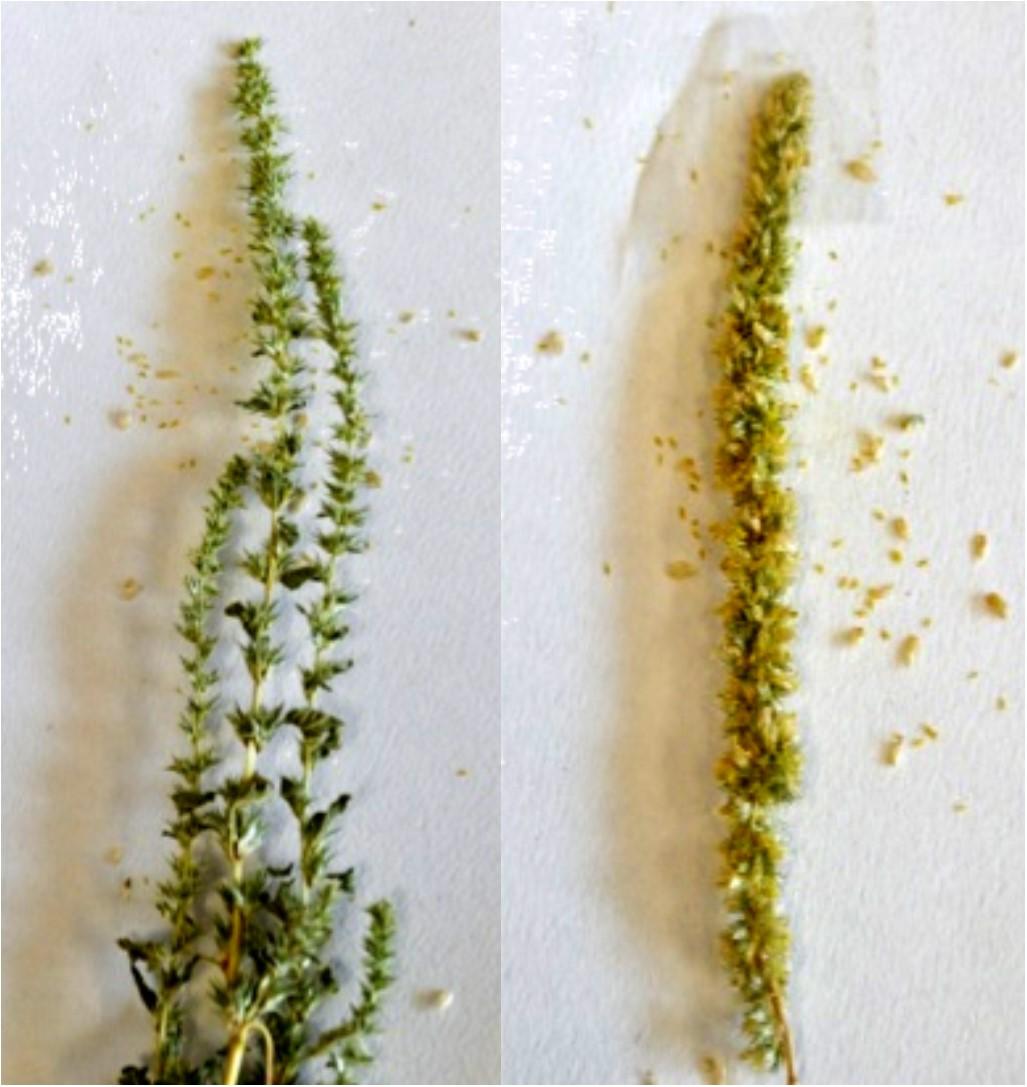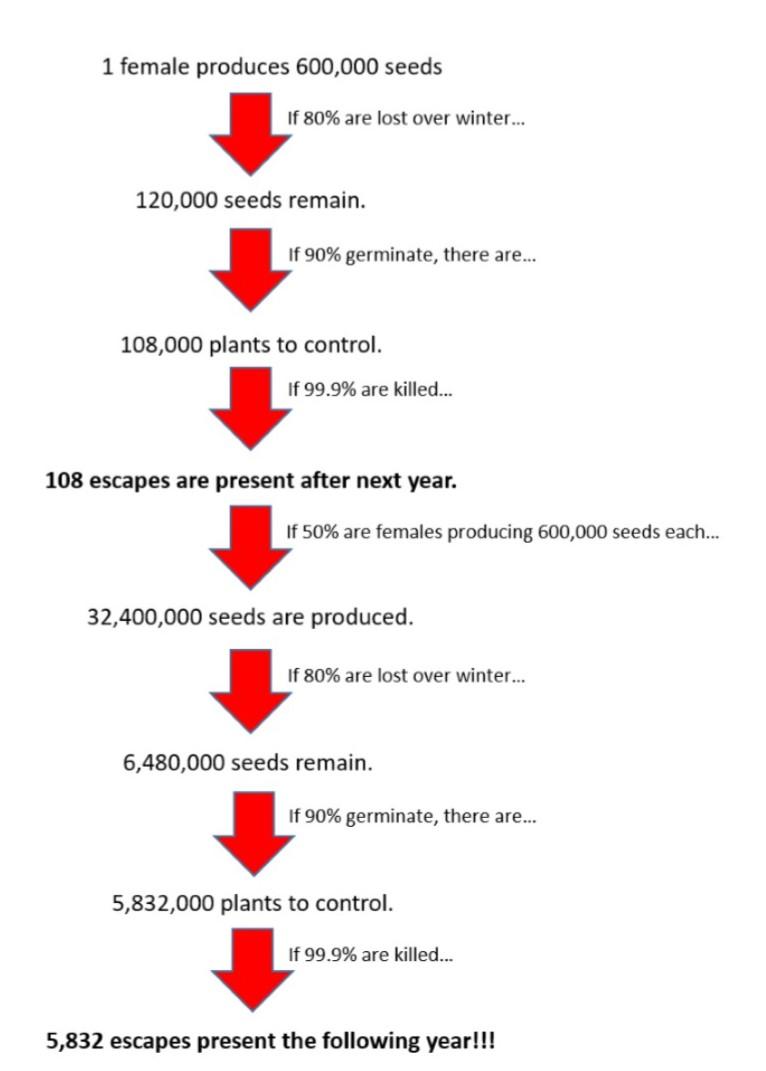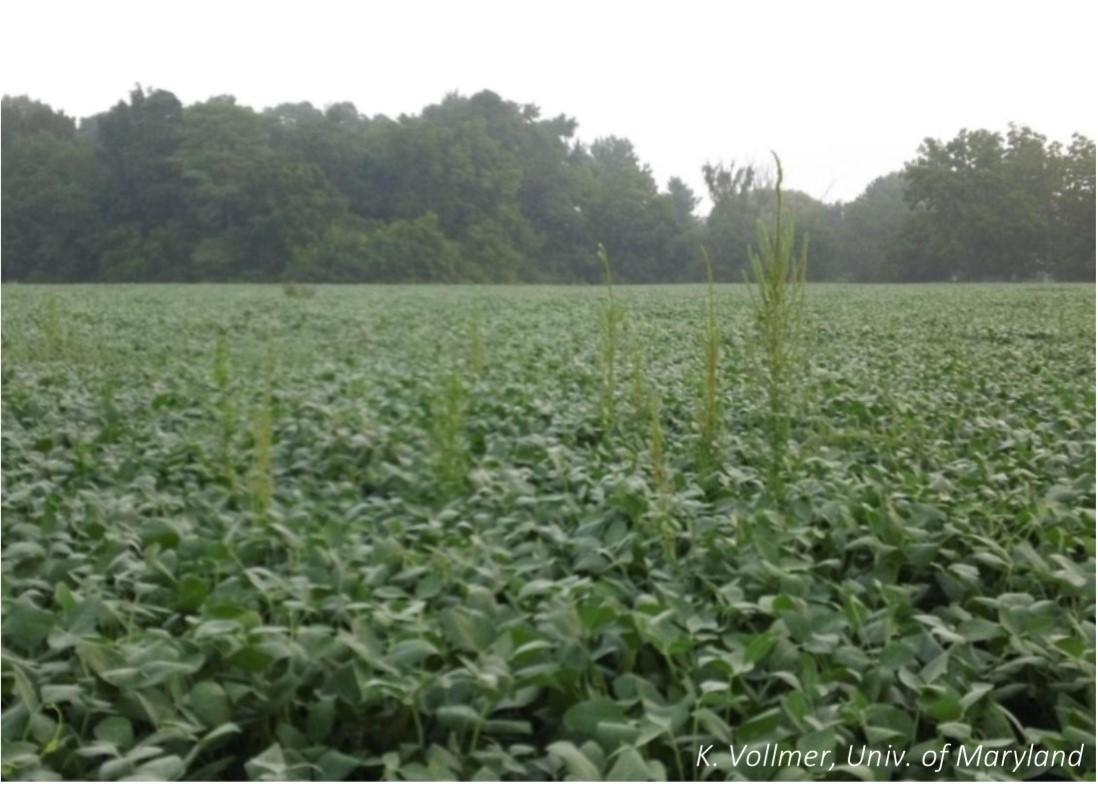Time to Pull Palmer Amaranth
Lately, I have seen several fields with Palmer amaranth flowers (Figure 1). It is imperative that these plants be managed before harvest (Palmer amaranth is listed as a noxious weed in Maryland and Delaware). At this point, mowing or herbicides will not improve yield nor prevent Palmer from germinating next year. Plants need to be physically removed from fields. Palmer amaranth has both male and female flowers on separate plants (Figure 2), and focus should be placed on removing the seed-producing females first. A single female can produce approximately 600,000 seeds per plant, and these seeds can remain viable for six years. Palmer seed matures within 2 weeks of flowering and if left unchecked, a single plant can infest an entire field within a few years (Figure 3).


Upon removal, plants should be bagged and buried or burned along the field’s edge, or disposed of in a manner as to not contaminate other areas. Palmer retains most of its seed in the fall. There is still time to remove them, but combines will spread seed. If plants cannot be removed before harvest time, areas with Palmer should be harvested last, and the combine thoroughly cleaned before moving. Be sure to mark areas where mature Palmer is present, and pay special attention to those areas next year. Taking these measures will help to reduce the Palmer seedbank and prevent the problem from becoming worse next year. In the United States, Palmer is resistant to at least 5 different herbicide groups. So far, Palmer is only resistant to 2 herbicide groups in the Mid-Atlantic. However, any escapes could indicate possible resistance. Let’s not allow any more Palmer to proliferate! Edit media Figure 3. Number of Palmer amaranth escapes possible over successive years.
This article appears on September 2021, Volume 12, Issue 6 of the Agronomy news.
